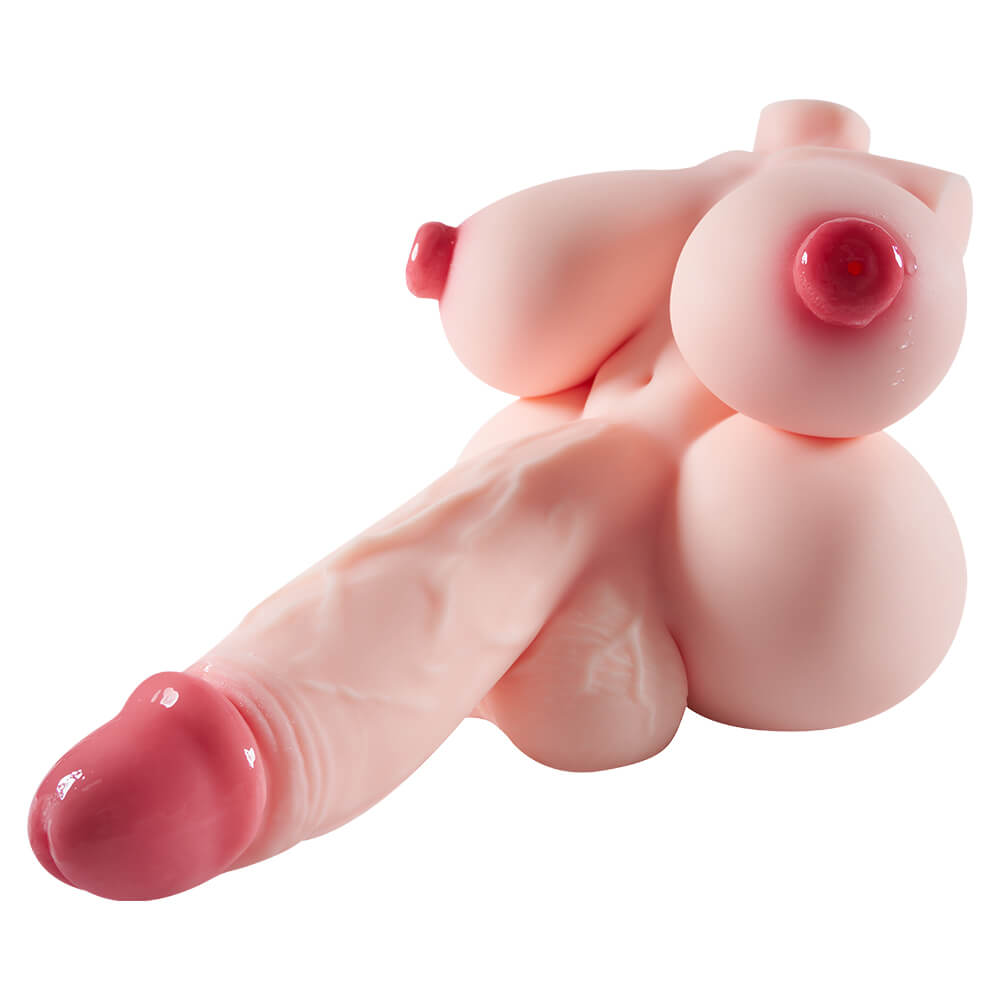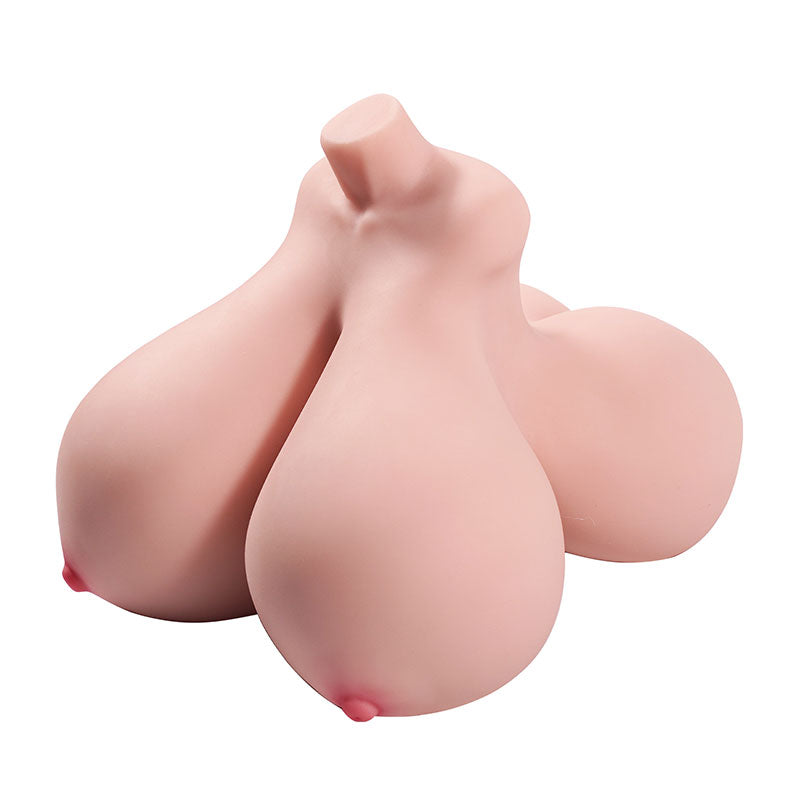What is Futa Porn? A Definitive Guide to the Genre
Table of Contents
1. The Historical and Cultural Roots of Futanari
2. Defining the Modern Futa Porn Genre
3. The Psychology of Appeal: Why is the Genre Popular?
4. A Note on Respectful Terminology
5. Frequently Asked Questions (FAQ) about Futa Porn
In the vast and varied landscape of digital media and online subcultures, few terms generate as much curiosity and specific interest as futa porn. This term designates a highly popular and distinct genre of Japanese pornographic animation and comics, more broadly known as hentai. While it is a niche category, its influence and dedicated fanbase have made it a significant part of the hentai ecosystem. For those new to the concept or seeking a deeper understanding, this guide provides a comprehensive exploration of the genre, from its deep historical origins and modern characteristics to its cultural significance and the reasons behind its enduring appeal. This article will unpack the meaning of futa porn, offering a clear and detailed look into one of hentai's most recognizable categories.
The Historical and Cultural Roots of Futanari
To understand the modern genre of futa porn, one must first trace the origins of its root word, futanari (ふたなり). The term itself has a rich and complex history in Japan that predates its association with pornography by centuries. The Japanese word translates to "dual form" or "two kinds," from futa (two) and nari (form or to become), and was originally used to describe the concept of hermaphroditism or androgyny.

The earliest known documented use of the word appears in a 12th-century painted hand scroll titled Yamai no Sōshi ("Scroll of Illnesses"). This text, created between the Heian and Kamakura periods, depicts various medical conditions, including illustrations of individuals possessing both male and female primary sexual characteristics. The accompanying passage uses the word futanari to describe them, stating they are "of both forms". This initial usage frames the concept within a biological or pathological context.

However, the idea of gender ambiguity was also woven into the fabric of Japanese folk religion and spiritual beliefs. Deities such as the dōsojin, who guarded travelers and villages, were sometimes depicted with ambiguous gender, being neither strictly male nor female. Furthermore, some traditional beliefs held that a person's gender could change according to the phases of the moon, giving rise to the term

hangetsu (半月), or "half-moon," to describe such beings. This cultural fluidity suggests that the concept of a dual-gendered form was not merely medical but also a part of a broader spiritual and mythological landscape.
By the 17th century, the meaning of futanari underwent another significant transformation. It evolved from a biological descriptor into an aesthetic ideal with the emergence of the term futanarihira ("androgynous beauties"). This term was often applied to male Kabuki actors, known as onnagata, who specialized in playing female roles with such skill that they created a captivating androgynous appeal. This shift marks a crucial point where the concept moved from a description of the body to an appreciation of aesthetic ambiguity, celebrating the beauty found in the blending of masculine and feminine qualities. This long and layered history—from medical classification to spiritual concept to aesthetic ideal—provides the essential cultural background for the term's final evolution into the specific pornographic genre it largely represents today.
Defining the Modern Futa Porn Genre
While the word futanari has a long history, its modern usage is almost exclusively tied to a specific genre of hentai that gained widespread popularity in the 1990s. This decade marked a turning point where the term was co-opted and redefined by the adult manga and anime industry. Today, when people search for or discuss
futa porn, they are referring to this modern, fictional genre rather than its historical antecedents. The genre is defined by its depiction of characters who possess a unique combination of sexual characteristics.
Key Characteristics of Futanari Characters in Hentai
The central and defining feature of the futa porn genre is its characters. Typically, these characters, often referred to simply as "futas," are depicted with an overwhelmingly female physique. They possess conventionally feminine traits such as a curvaceous body, voluptuous breasts, and feminine facial features. However, they are distinguished by the presence of male genitalia—specifically, a penis, which is often depicted as being unusually large.
In most depictions within the genre, these characters possess both a penis and a vagina, allowing them to participate in sexual acts as either the penetrative or receptive partner. The anatomical representation can vary; some futanari characters are drawn with a scrotum, while others are not, but the combination of breasts, a penis, and a vulva is the most common visual trope. This blending of primary sex characteristics on a single, female-presenting body is the core fantasy of the genre and the foundation upon which all its narratives are built.
Exploring Subgenres: The Rise of Furry Futa
Like any major artistic or entertainment genre, futa porn has evolved and cross-pollinated with other niches, leading to the creation of numerous subgenres. These subcategories cater to more specific tastes by blending the core futanari concept with other popular aesthetics and tropes. This diversification showcases the genre's maturity and its ability to adapt to a wide range of fan interests.
One of the most popular and creative subgenres is furry futa. This niche combines the anatomical features of futanari characters with the visual aesthetics of the furry fandom, which centers on anthropomorphic animal characters. In furry futa content, characters are depicted as human-animal hybrids—often with features like animal ears, tails, fur patterns, or hooves—while still retaining the defining futanari traits. This subgenre has inspired a dedicated following and a vast range of artistic works, from comics and animations to physical collectibles. For enthusiasts looking to experience this unique blend of hentai charm and furry aesthetics in the real world, creations like the Bonnie X MRLSexdoll Co-brand Furry Futa Sex Doll offer a high-quality realization. Designed in collaboration with artist @BonnieBovine, this "Furry Futa Cow Wife" torso is crafted from premium silicone to capture the specific appeal of the furry futa subgenre, translating the fantasy into a tangible form. The existence of such a specialized futa sex doll highlights the subgenre's significant popularity and the desire among fans for products that reflect their specific interests.
The Psychology of Appeal: Why is the Genre Popular?
The widespread and enduring popularity of the futa porn genre can be attributed to a complex interplay of psychological factors and the unique fantasies it offers. Moving beyond a simple definition, understanding why it appeals to its audience reveals deeper insights into themes of gender, power, and sexuality. The genre's success is not arbitrary; it taps into specific desires and curiosities that other forms of pornography may not address as directly.
A primary element of its appeal lies in its exploration of gender fluidity. The futanari character inherently challenges traditional binary notions of gender by physically embodying both male and female attributes. For many viewers, this provides a "safe" fictional space to explore fantasies that blur conventional lines without confronting real-world complexities or questioning their own sexuality openly. The genre serves as a form of escapism, allowing individuals to immerse themselves in narratives where gender is more malleable and multifaceted.
Another significant factor is the unique power dynamic presented in the content. The typical futanari character combines the visual appeal of a feminine form with the symbolic and literal power of the phallus. This creates a compelling figure who can be both sexually dominant and receptive. For some heterosexual male audiences, this dynamic is particularly appealing because the character can exert masculine sexuality without being perceived as masculine, thus making her powerful but not intimidating in a way that might challenge the viewer's own masculinity. Furthermore, the genre often depicts futanari characters in sexual encounters with other women. Some analysts suggest that this allows a male viewer to more easily empathize with or project himself into a lesbian scenario, as the presence of a penis provides a familiar point of reference while maintaining the "lesbian purity" of an encounter between two female-presenting figures.

The Role of Futa Nhentai and Enhentai Futa in Fandom
As with any online community, a specialized lexicon develops to help fans find and categorize content. Within the futa porn fandom, certain search terms have become standard. Understanding these terms is key to understanding how users interact with the genre.
The term futa nhentai is perhaps the most common search query used by fans seeking out manga (Japanese comics) and doujinshi (independently published comics) featuring futanari characters. "Nhentai" is the name of a very popular online aggregator website for hentai manga, and its brand has become so ubiquitous that the name is now used almost synonymously with the act of searching for hentai comics online. Therefore, a user searching for futa nhentai is specifically looking for comics within this genre. Similarly, the term enhentai futa is a common misspelling or variation of the same query. Its prevalence highlights common user search patterns and the different ways people may try to find this content. These terms are not distinct subgenres themselves but are practical tools used by the community to navigate the vast amount of available media and locate the specific type of content they wish to consume.
A Note on Respectful Terminology
While exploring the world of futa porn, it is critically important to draw a clear and firm line between the fictional genre and real-world human identities. The terms "futanari" and its common abbreviation "futa" are descriptors for a specific category of pornographic fiction and its characters. They exist within the context of anime, manga, and related media.
Using these terms to refer to real-life transgender or intersex individuals is widely considered inaccurate, inappropriate, and deeply offensive. Real people's identities are not reducible to a pornographic trope, and applying a term born from fetishistic fiction to a person's lived experience is dehumanizing. The LGBTQ+ community and intersex advocates have pointed out that using "futa" or "futanari" as a label for people is derogatory and perpetuates harmful stereotypes rooted in the fetishization of their bodies.
To demonstrate respect and understanding, it is essential to use appropriate and correct terminology. In Japan, the terms used to describe real intersex individuals include han'in'yō (meaning "both yin and yang") or the English loanword intasekkusu. In English-speaking contexts, the correct terms are "intersex" for people born with variations in sex characteristics and "transgender" for people whose gender identity differs from the sex they were assigned at birth. Maintaining this distinction is not merely a matter of political correctness; it is a fundamental aspect of showing respect and acknowledging the difference between a fictional fantasy and the diverse realities of human identity.
Frequently Asked Questions (FAQ) about Futa Porn
What is the difference between futanari and hentai?
Hentai is the broad, umbrella term for all Japanese pornographic media, including anime, manga, and video games. Futa porn, which is based on the concept of futanari, is a specific genre within the larger category of hentai. It is characterized by its focus on fictional characters who possess both female and male primary sexual characteristics.
Where did the futa porn genre originate?
The genre as it is known today became popular in Japanese manga and anime during the 1990s. This is when the term "futanari" became almost exclusively associated with hentai. However, the root word itself has a much longer and more complex history in Japanese culture, with origins that can be traced back to medical texts and folk beliefs from as early as the 12th century.
What does futa nhentai mean?
Futa nhentai is a very common search term that fans use to find hentai manga (comics) belonging to the futanari genre. "Nhentai" is the name of a popular website that aggregates hentai content, and its name has become a colloquialism for searching for this type of media online.
Are there products based on the futa genre?
Yes, the popularity of the genre and its subgenres has led to the creation of various physical products for fans. For those interested in specific niches like furry futa, items such as a high-quality futa sex doll or onahole (a type of male masturbator) have been developed to provide a tangible way to experience the fantasy.
Is the term "futanari" offensive?
Within the specific context of discussing the fictional hentai genre, "futanari" is the standard and accepted descriptor. However, the term is considered offensive and inappropriate when used to describe or label real-life transgender or intersex people. It is crucial to use respectful and accurate terminology for real individuals and to reserve "futanari" for discussions of the fictional media genre only.
Reference list
Ask John: What is futanari and why is it popular? (2018, March 12). AnimeNation. Retrieved from https://www.animenation.net/blog/ask-john-what-is-futanari-and-why-is-it-popular/
Dictionary.com. (2018, March 1). Futanari. Retrieved from https://www.dictionary.com/e/pop-culture/futanari/
Futanari. In LGBTQIA Wiki. Retrieved from https://lgbtqia.wiki/wiki/Futanari
Futanari. In Wikipedia. Retrieved from https://en.wikipedia.org/wiki/Futanari




















